The ultimate purpose of sea power is to effect events on land, where most people spend their time. Often, this takes the form of controlling trade and use of the sea, but it can also involve direct projection of power ashore. This is usually unpopular with those on land, and while it's usually best to make your displeasure known at sea, this hasn't always been possible. The alternative is usually fixed coastal defenses, set up ashore to make life more difficult for attackers. Initially, these took the form of lookouts and conventional fortifications, set up to protect against raids on major settlements and up rivers, such as the Roman fortifications which protected southeast England and northern France. It was only with the development of gunpowder that land-based defenders gained an effective weapon against ships, and dedicated coastal defenses began to appear. One early example was Dartmouth Castle, which was built in the 1400s to protect Dartmouth, in soutwest England, and was sited to cover an iron chain to keep enemies out of the harbor. Artillery and booms like the chain would both form a vital part of coastal defenses for the next half-millennium.
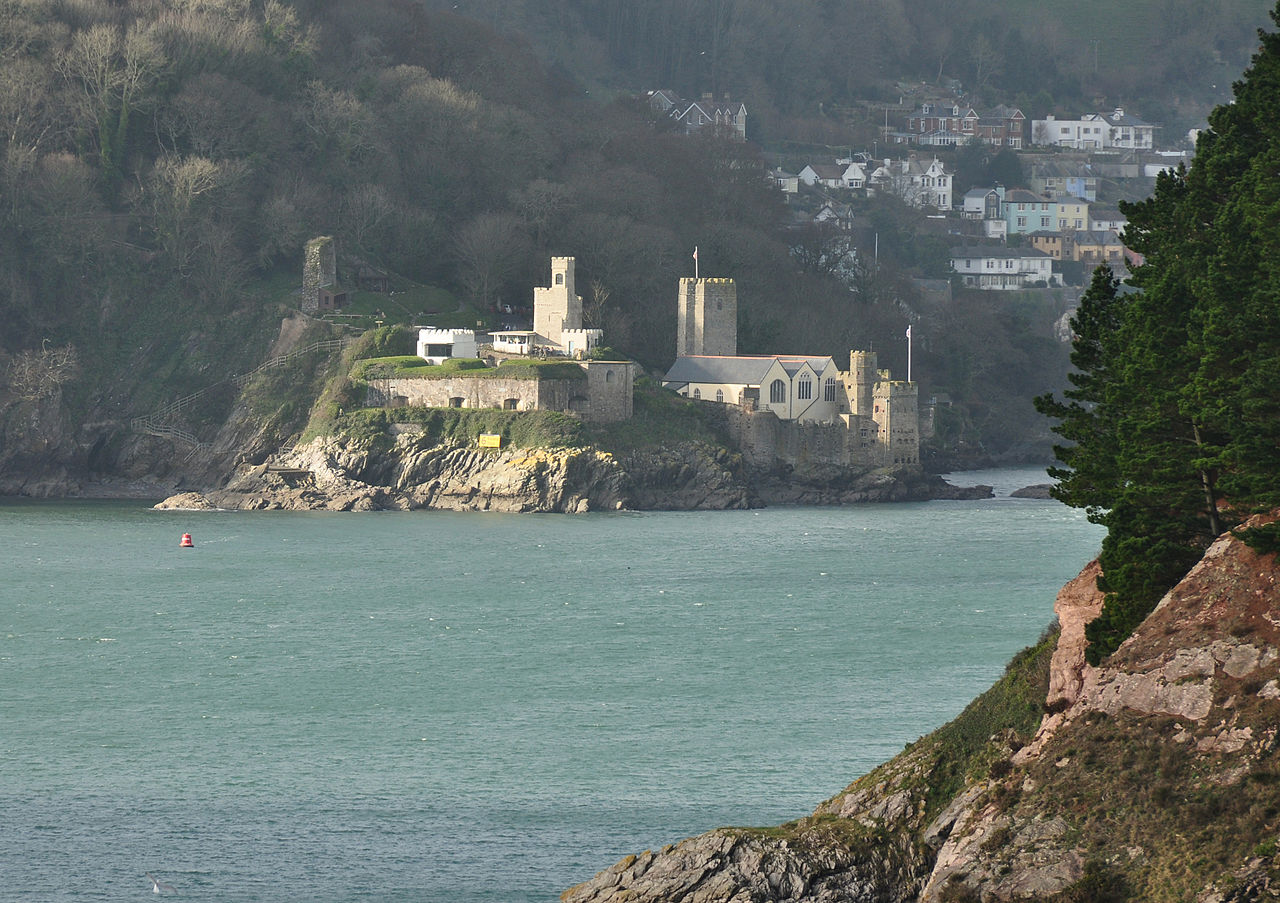
Dartmouth Castle, protecting the river Dart
The first large-scale coastal defense system appears to have been the Device Forts,1 constructed in England and Wales under Henry VIII to guard against the possibility of invasion by the French. The Device Forts were built in the era during which midevial castles were giving way to more modern bastion forts, of which the most impressive were so-called "castles", stone forts equipped with numerous heavy guns and intended to protect important cities and anchorages, as well as providing the defenders some protection against enemy troops. More numerous were the blockhouses, smaller stone buildings equipped with a few guns and positioned to defend against naval assault only. The first castles used rounded bastions, although these left "dead zones" near the walls where attacking troops could shelter, and later fortifications were angular in the style of the bastion forts being developed in continental Europe. These could cover all of their external walls with enfilading cannon fire, making them much harder to attack from land, although they still used vertical stone walls that were vulnerable to cannon fire.2
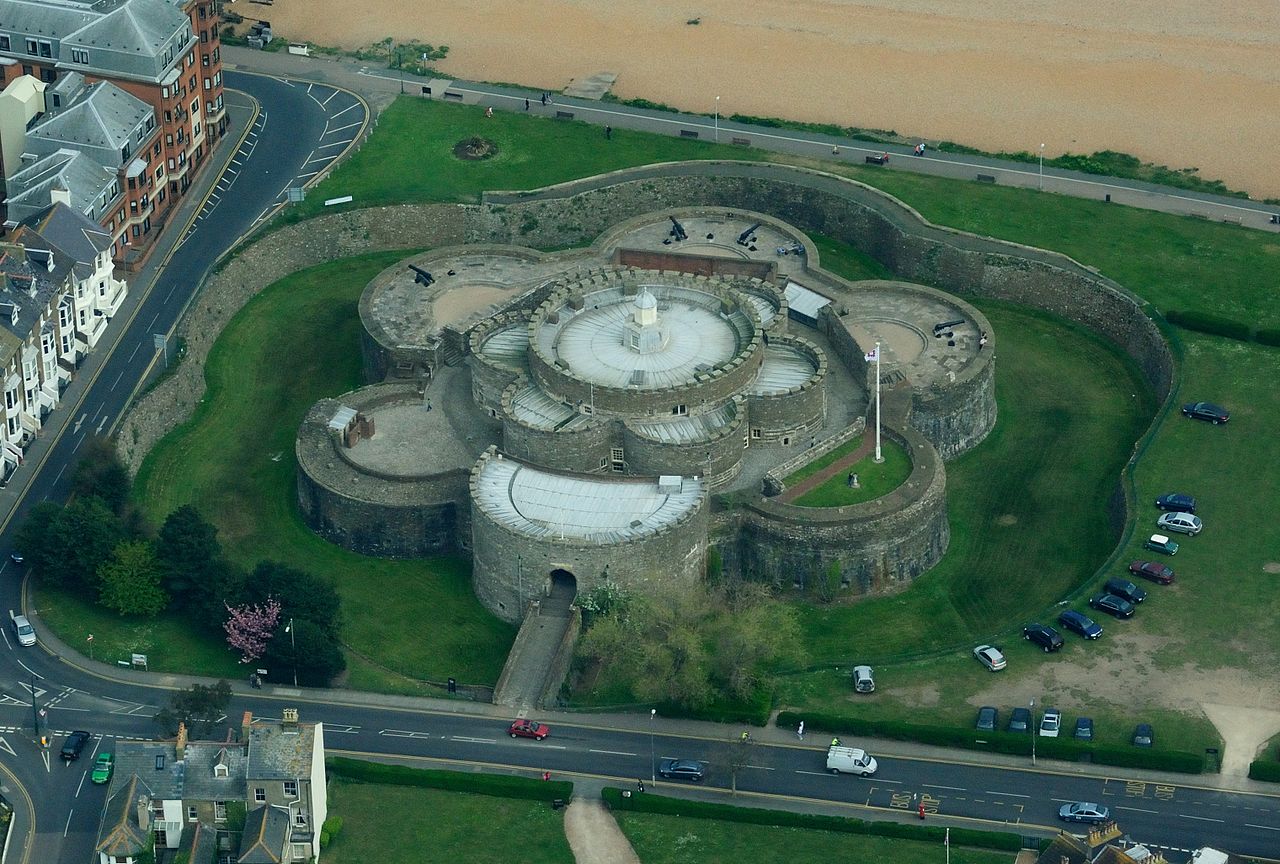
Deal Castle, one of the largest Device Forts
The French did try to invade in 1545, but they chose to land in areas not defended by the Device Forts, and their invasion was ultimately repulsed. As the threat of war faded, so did interest in maintaining the coastal defenses, ultimately a common theme in the history of these fortifications. Some were destroyed, while others were allowed to deteriorate until the threat of war with Spain renewed interest in protecting England's coasts. The threat of the Armada saw many of the defenses improved and a few new forts were built under Elizabeth I, but by the end of the 16th century, most of the Device Forts were badly out of date.3
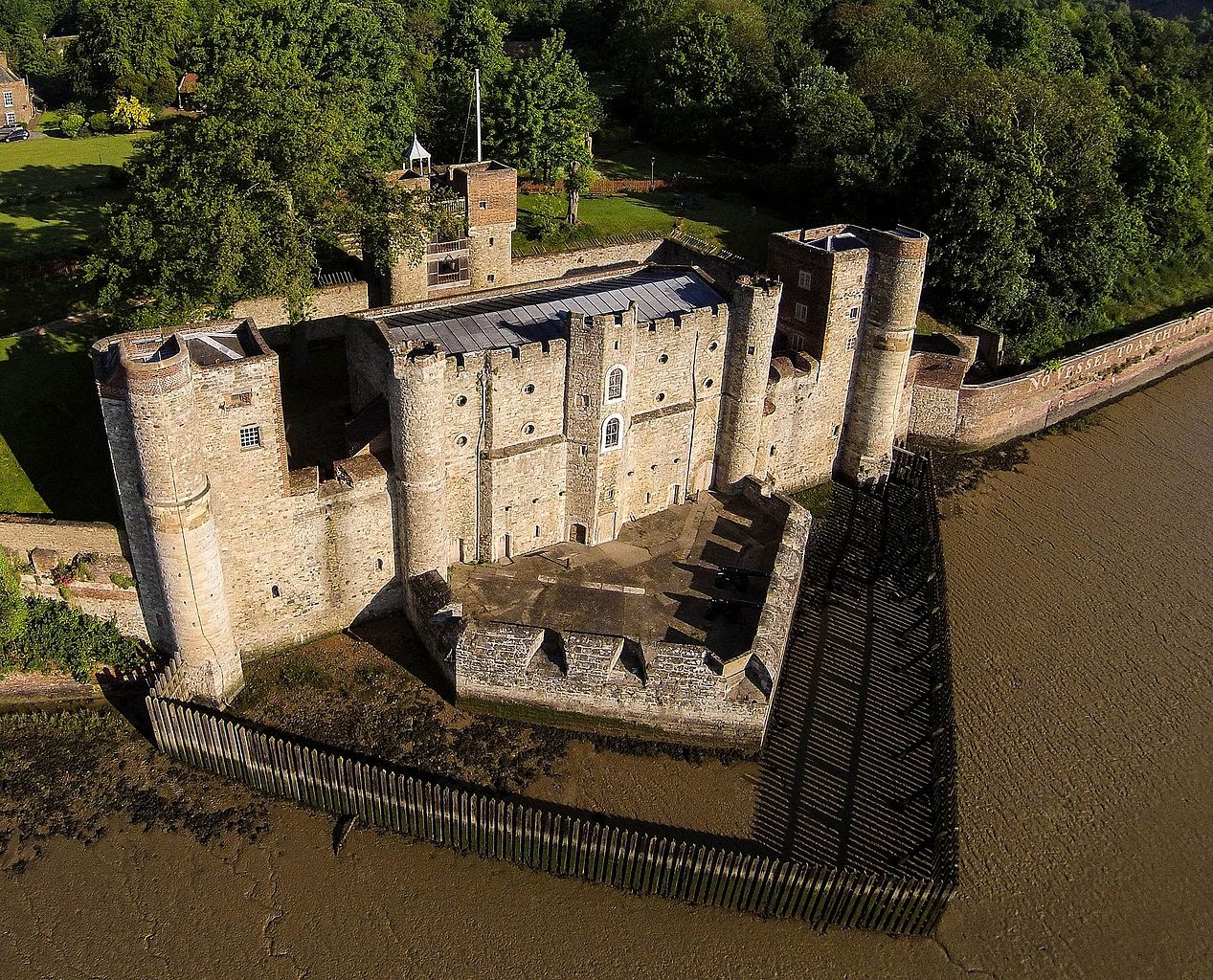
Upnor Castle, showing both the castle proper and the angled bastion projecting into the river
The threat of foreign attack on England faded during the early years of the century, so little work was done until the English and Dutch began to clash over trade in the mid-1600s. Even with the impetus of war, the English were rather sluggish in upgrading their defenses until 1667, when the Dutch raided the River Medway, giving a graphic demonstration of the importance of coastal defense in the absence of sea power. The Medway, a tributary of the Thames, was home to Chatham dockyard, one of the RN's major bases and the location of a significant fraction of the fleet, which was laid up to save money. Defenses at Sheerness, covering the mouth of the Medway, were still under construction, and the Dutch easily captured the town. They then pushed on upriver, where the English ships waited, protected by a heavy chain to prevent the passage of ships and the poorly-prepared Upnor Castle. Despite these defenses, reinforced by the use of blockships, the Dutch managed to burn much of Chatham Dockyard and carry off a number of ships. The chain was not covered by sufficient artillery, allowing the Dutch to break it and then remove the supports that kept it at the correct depth, while the defenders of Upnor Castle were unable to prevent the Dutch from sailing past. Eventually, the English began to get their act together and emplace additional artillery, and the Dutch withdrew, taking with them the English flagship Royal Charles. Even greater damage was averted by Dutch fears of the fortifications protecting London, although in practice these were also badly manned and armed.
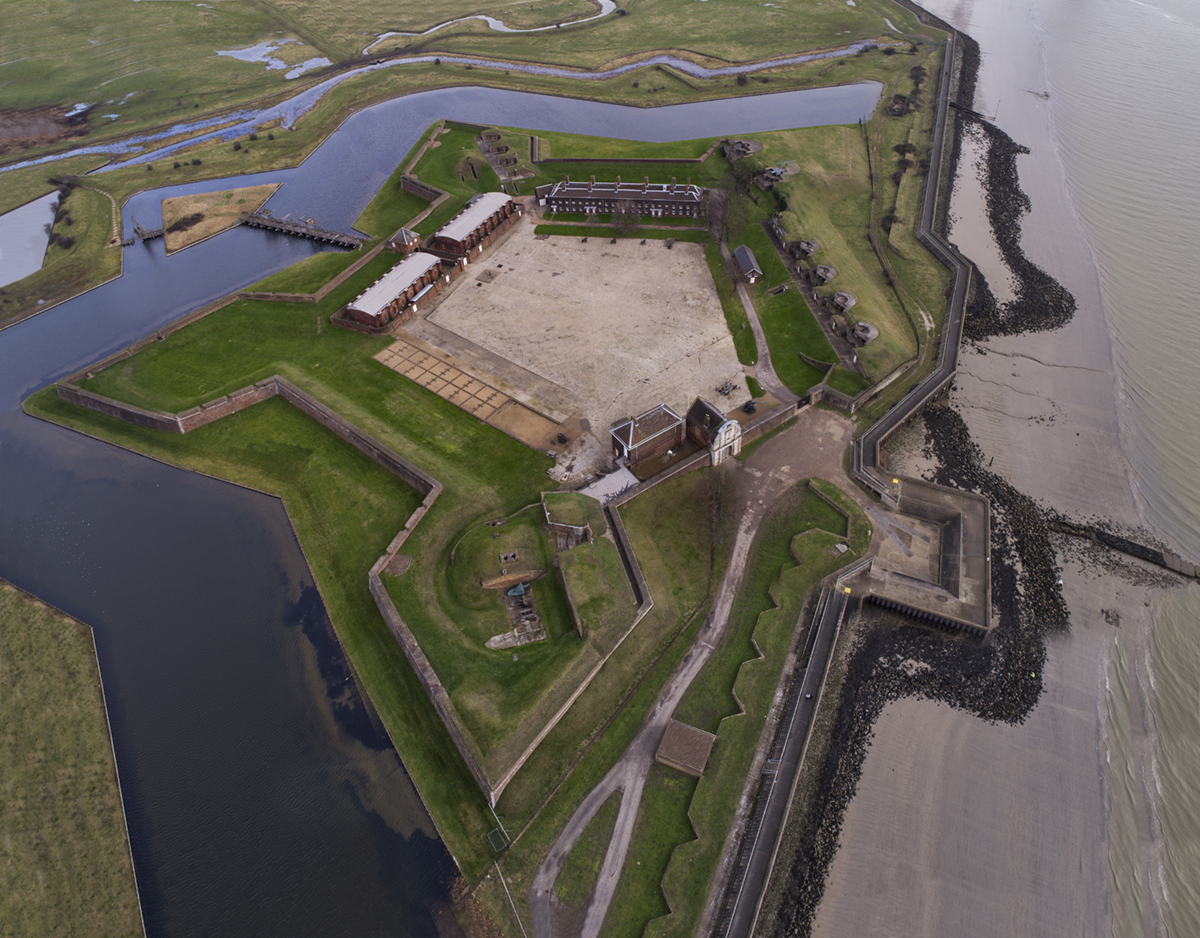
Tilbury Fort from the air
In the aftermath of the disaster on the Medway, the British moved quickly to reinforce their coastal defenses, building large forts like the one at Tilbury, on the Thames below London, and the Citadel at Hull. These were angular forts with bastions to cover not only the sea but also the outer walls of the fort. To make sure that an attacker couldn't simply seize the fort from the rear, these forts often had extensive landward defenses, including moats, drawbridges, and outer curtain walls. Guns were fired over the top of the fortification, an arrangement known as "en barbette".4
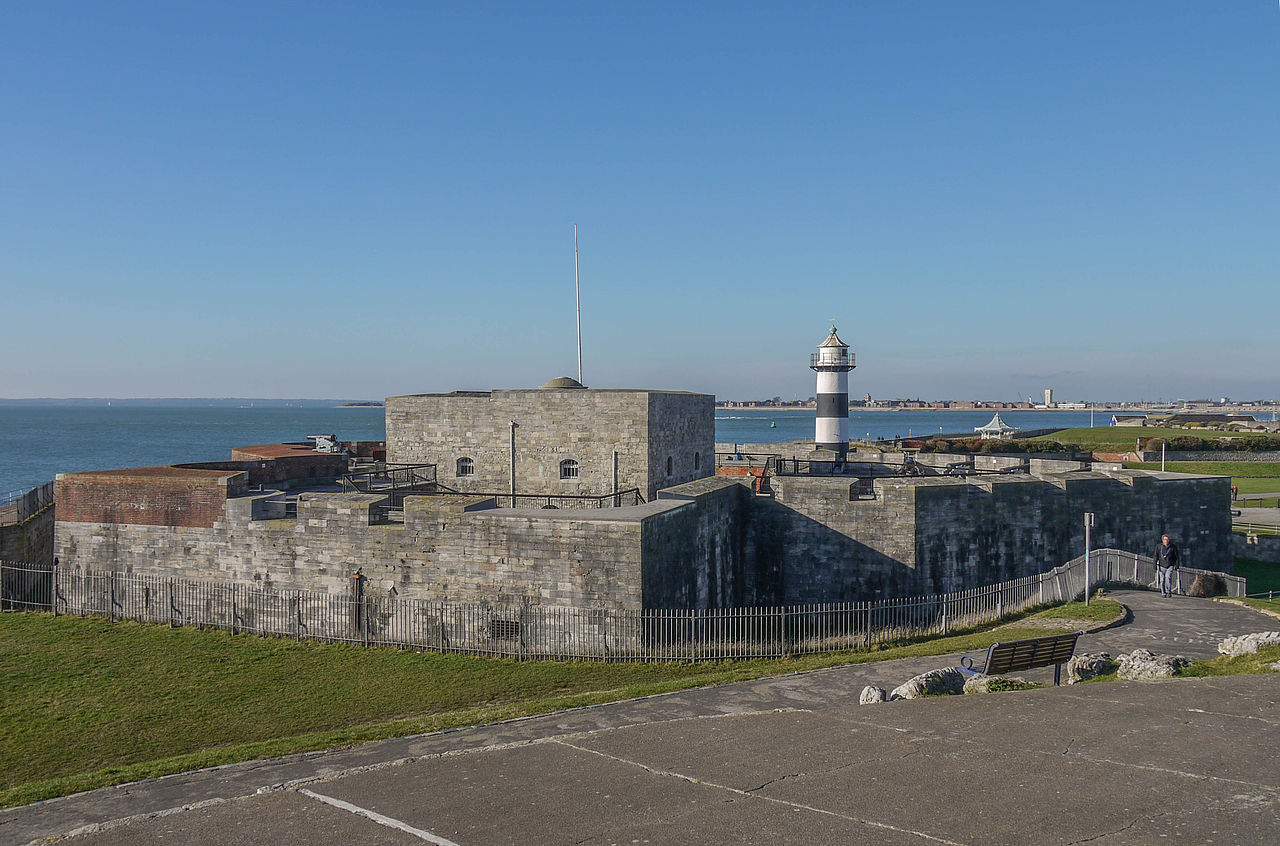
Southsea Castle, built to protect the RN's base at Portsmouth
During the course of the Dutch Wars, the Royal Navy grew in strength, soon becoming the most powerful in the world. As a result, the need for fortifications dwindled, and it would be a century before they would see a major threat that necessitated the improvement of Britain's defenses. In the meantime, they would lose most of their colonies in North America, who would go on to form a separate thread in the development of coastal defenses.
1 The order to build the forts was known as a "device", hence the name. ⇑
2 These walls persisted in coastal forts long after they were abandoned on land because cannons required many hits in the same area to batter down stone, and ships couldn't manage that kind of accuracy. ⇑
3 I apologize for the Anglo-American focus in this series. I'd like to take a broader view, but English sources for other nation's coastal defenses are extremely thin, with a few notable exceptions. ⇑

Comments
...Oh, bravo, sir. Always been fascinated with the US coast defense system - Fort Monroe is one of my favorite places on earth - and I'm looking forward to this.
Mike
Fort Knox in Maine is an example of an American coastal defense. I have some pictures if interested.
I’d actually be very interested in those. That’s a third-system fort, which will be discussed in Part 3. (Which I haven’t written yet, but it’s on the list.)
@Mike
I'd forgotten you were interested in that. It's not an area I'm that knowledgeable on. Would you be be interested in looking over upcoming parts?
Possibly-mythical stories about Archimedes aside:
-Livy, Ab urbe condita XXIV.34
Note that Livy was writing about 200 years after the siege. And the famous 'heat ray' using mirrors to focus sunlight and set ships on fire isn't mentioned until a couple of hundred years after Livy...
The Romans were generally pretty good at taking technology which worked from their opponents, which strongly suggest that anything special Archimedes came up with didn't work that well. The grapple just seems impractical. For one thing, you're likely to break the bit you grabbed long before you can lift one end of the ship. As for catapults, I won't say they weren't used, but looking into ancient fortifications, they don't seem to have been that widespread. Re the death ray specifically, Mythbusters tried it at least three times, and never managed to make it work.
Bean,
I'd love to take a look at your material. Feel free to send anytime.
Mike
What's the effective range of catapults, ballistæ etc. compared to early cannons? No point in static defenses if the attacking force can just land somewhere else.
Unless the geography means you can't land anywhere else.
@Lambert: I think that's it- the range of pre-gunpowder coastal defences was so short that they were only really useful in cases where an entire island could be fortified, like Syracuse, or Tyre which was captured by Alexander the Great (who built a causeway out to it).
I don't have numbers to hand, but going from intuition, even early cannon generally threw things significantly faster than did catapults. As a result, you get the ball to the target faster, and don't have to loft it nearly as much. This is tremendously helpful when shooting at ships, thanks to our old friend, fire control. The other aspect was that a cannon of a given power is more compact than a catapult, particularly something like a big trebuchet you'd need for really long range. This means a much smaller fort for a given amount of firepower, which in turn makes it cheaper to build, maintain, and man.
Romans and technology. What the Romans had was slave labor, which was used to great advantage for the empire. Case in point: Pont du Gard aqueduct in southern France.
That's valid for post-gunpowder too, isn't it? I mean they're forts, not firebases. They don't project power out to sea, just violently discourage enemy ships from coming too close to a certain point. Maybe protect a beach or a harbor, so invading troops have to land further away. But they're like land forts in that they can only protect their immediate vicinity.
As for an early instance of forts actually performing sea denial, the Ottomans built a pair of forts to throttle the Bosphorus, to aid their conquest of Constantinople.
I think there was a definite change in how much of their vicinity they could protect with the coming of gunpowder, which made it a lot easier to put together fortifications capable of controlling a harbor or the like. Unfortunately, I don't have particularly good references on late siege engines and early gunpowder, so I'll make do with what I do have, which is GURPS Low-Tech. (Yes, I know it's an RPG sourcebook. But their bibliography is impressive, and it has the numbers I need.) It suggest that direct-fire mechanical artillery is going to have trouble getting past 3-400 yards, while trebuchets might get to 600 yds. Oh, and those take 5 minutes or more to reload. Even the earliest bombards can match that, and they're cheaper and five times faster to load. (Not sure how to reconcile that with Elizabethan-era naval guns taking an hour to load. I can definitely see it being more difficult on a ship, but I also don't know how much was streamlined for gameplay purposes.) By the late 1500s, the cannon in question had maximum ranges in the 2,000 yard range. Even if effective range is considerably shorter, you're still able to bring a lot more firepower at a longer range with a cannon than with a trebuchet.
Coast artillery has almost never been about making it impossible or even difficult for the enemy to approach your shores and land troops on your beaches. That wasn’t realistically possible until fairly late in the 20th century, and even then only under fairly restricted circumstances. The real value is, starting with the most important,
Blocking access to navigable rivers, so that the enemy has to land at your coasts rather than sail directly into your heartland. The Vikings did most of their serious conquering (just not their most famous conquering) by sailing boats upriver to e.g. Paris and Kiev.
Preventing the enemy from using your ports and harbors to land his troops. It’s much easier to land troops, and even more so cavalry, artillery, and supplies, in a protected natural harbor than on a beach open to the sea, and easier still if there’s port infrastructure you can use. Note that the Normandy Invasion would have been counted a failure if the Allies hadn’t taken a port in fairly short order.
Closing off straits that form natural maritime chokepoints (e.g. Gibraltar or the English Channel), and thus changing the maritime geography in your favor.
2 is probably the easiest, and often within reach of pre-gunpowder artillery. Any harbor you’re willing to invest the cost of serious fortifications to defend, you can build and maybe already have built breakwaters that restrict passage to gaps no more than a catapult-shot across. And you maybe can’t sink an enemy fleet with en passant catapulting, but you can use the catapults to mess up anyone who stops to dismantle the boom or chain that you’ve set up across the gap.
1, some rivers can be defended the same way, but a lot of them are well over a catapult-shot wide and breakwaters will be complicated by the fact that a whole lot of water really wants get out into the open sea. You probably want gunpowder artillery to close these at the mouth, though of course there’s eventually a point where the navigable waterway is narrow enough for catapults and booms and maybe you’ve got stuff upstream of there worth defending.
3, aside from the Bosporous (which would be called a river if it were much longer), most of the natural straits are many miles wide and you’ll be wanting pretty serious cannon for these. And minefields, torpedo boats, and submarines if you can get them.
John, a couple of quibbles:
First, there are natural harbors with wide mouths that won't require breakwaters, and where breakwater construction would be seriously difficult. Many of these are on rivers.
Second, the allies didn't take a port capable of supplying the troops landing in Normandy for several months. They knew this wouldn't be easy, and tried to bring two with them in the form of Mulberries, but after the Omaha Mulberry was destroyed, the American forces were supplied over the beaches until September. But that was also after several years of very intense development, and doing something like that any earlier would have been impossible.
True, river-mouth harbors are an interesting special case. Often (e.g. London) the port facilities are built a fair distance upriver, in which case it simplifies to a problem previously determined to be insoluble. Well, at least without gunpowder.
The Mulberry harbors at Normandy were also a special case. Years to prepare, as you note, and designed to last only three months. And one of them didn't last three weeks. So I'm going to stick with "failure if they didn't capture a real harbor in short order", with the Mulberrys just buying them a bit more time to do that.
Also, wow, how did I wind up with the second half of my comment appearing in what looks like 24-point bold?
It took them 3 months to capture a real harbor, or at least to make it operational enough to stop supplying the troops over the beach, and I don't think that invasion can be counted a failure.
And markup interpreted the number sign as an order for bold. No idea why, and I've gone in and fixed it.
As a youth I enjoyed several trips to Fort Worden (https://en.wikipedia.org/wiki/Fort_Worden) in Washington State. It's a park now but it was built along with two other forts (Fort Flagler and Fort Casey) around the turn of the century to protect the entrance to Puget Sound from invasion. Naturally it never saw combat, though it did continue to serve as a defenseive battery during WWII along with radar and anti-aircraft guns. Our church youth group played capture the flag there once, it was a lot of fun running through the bunkers. And the artillery emplacements were very educational (though the guns are long gone). I hadn't appreciated the amount of space necessary for a large artillery piece until I saw the barbettes there. I wonder how an invasion of the Puget Sound would have gone! Probably poorly for Fort Worden, as Wikipedia says that the forts were "obsolete soon after construction: the rapid advance in warship and gunnery design, as well as the advent of aircraft, quickly made fixed artillery positions ineffective and greatly diminished the role of coastal artillery in national defense."
I think the technical obsolescence of coastal defenses post-WWII is usually overstated. The Scandinavian countries and the Soviets kept extensive coastal defenses operational through the end of the Cold War. What killed them off in the English-speaking world was strategic obsolescence. Post-WWII, there was zero chance that a bunch of hostile battleships were going to show up off Puget Sound and try to gain entry, primarily because there were no hostile battleships. So there was no reason to keep them around, and it was easy to say “yep, the A-bomb and airpower have rendered these obsolete, get rid of them” than to explain what was actually going on. For countries that couldn't assume they'd be able to keep serious enemy naval forces far away from the coast, coastal defenses of the type at Fort Worden (although usually on a somewhat smaller scale) stayed as major parts of their arsenal until the 1990s.
You overlook another purpose of coastal artillery, the ability to force a toll. I am sure the Danish system for enforce the Sound Toll predates the Device Forts.